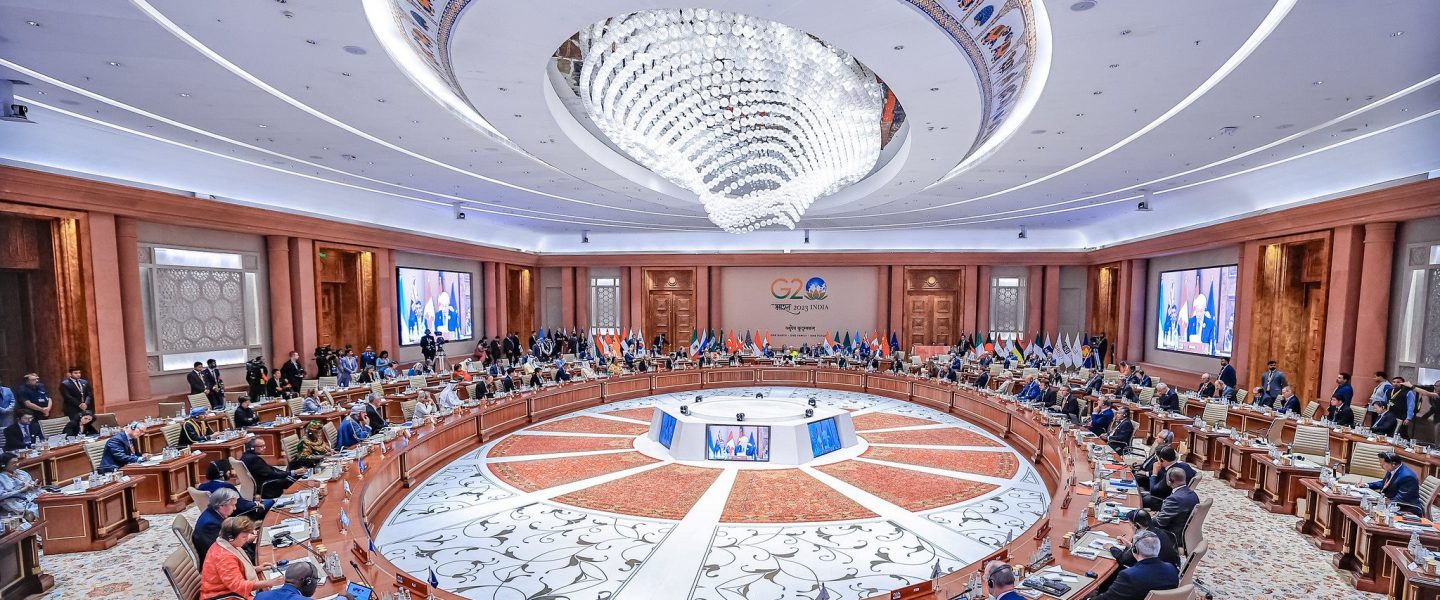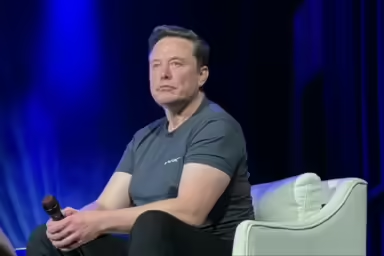G20 summits offer a rare opportunity for global leaders to meet face-to-face in real time. The summit in New Delhi was no different.
|
Listen To This Story
|
G20 summits rarely accomplish much that is concrete, and the meeting that was attended by President Joe Biden in New Delhi, India, over the weekend is not an exception. The real advantage of a G20 is that it gives global leaders a chance to cut through public relations and diplomatic protocols and actually interact with each other face-to-face and in real time. Policy is based on facts and their logical consequences, but policies are implemented by human beings whose behavior is often anything but logical. Vladimir Putin’s suicidal war in Ukraine is an example of how easily a major power can go off the deep end if the wrong man is at the top.
Part of any high-level policy decision is determining how other global leaders will act in a given situation. Body language, facial gestures, and reactions to seemingly innocent questions can offer clues to who the person really is, and how he is likely to react when under stress.
When Harry S. Truman was president, he had a sign on his desk that said, “The Buck Stops Here.” The G20 offers a chance for each leader to take the measure of the others, however briefly, and to make a personal assessment of what to expect from each of them. One of Biden’s first moves upon arriving in India was to have a private meeting with Indian Prime Minister Narendra Modi at Modi’s home.
The two world leaders who didn’t attend are Putin and China’s Xi Jinping. An international warrant is out for Putin’s arrest as a war criminal. While no one expects anyone to actually arrest Putin, it is clear that his presence would be awkward for Modi, G20’s host, who is currently courting US investment while trying to remain neutral about Russia’s bloody role in Ukraine. In any case, by now Putin knows what to expect from other world leaders — especially Biden — and he has dispatched Russia’s foreign minister, Sergey Lavrov, who is world-traveled, sophisticated, and probably more effective at winning friends than Putin could be in person.
Xi’s absence is a bit more difficult to decipher. He did attend a recent BRIC (Brazil, Russia, India, and China) meeting in South Africa and has been pushing BRIC and China’s Belt and Road Initiative (BRI) as possible alternatives to the G20.
It is possible that Xi sees the G20 as no longer all that relevant. A more pressing reason for not attending this year’s meeting, however, may be escalating clashes along the border that separates India and China. This border has never been clearly defined, and a newly aggressive China has begun listing on its maps territory claimed by India as part of China.
Another source of tension between China and India is international trade. China’s astonishing economic growth over the last half-century was built largely on the readiness of American and European companies to invest in China’s low-wage manufacturing capacity in order to avoid paying higher wages to workers at home.
In recent years China’s manufacturing capacity has moved up the value chain; with the country’s mounting prosperity, Chinese workers are no longer willing to work long hours for low pay. The US is also belatedly trying to put a stop to China’s theft of American technology and to the obstacles that Beijing erects to keep foreign businesses from selling in the Chinese market.
As the Biden administration ratchets up its trade disputes with China, India appears positioned to fill the gap. India, with a population of 1.4 billion, has now moved ahead of China as the world’s most populous country. While the Chinese have shown that they can excel in basic manufacturing, India has made impressive progress in high technology. The host country’s hopes to seize a larger role in trade with the US makes this particular G20 meeting especially relevant.
It is politically relevant for Biden as well. A major US concern is that China is taking an unusually aggressive stance concerning Taiwan, Japan, and the countries that border the South China Sea. In a move that has been rejected by practically all the players in the region, including the United Nations, China has now laid claim to that body of water in totality. According to the UN Conference on Trade and Development, roughly 20 percent of world trade, worth $3.3 trillion, passes through the South China Sea. The US Navy has guaranteed freedom of navigation through the South China Sea until now. If there is a confrontation with China, which seems increasingly possible, India’s help could be extremely beneficial. After the G20, Biden made a point of going straight to Vietnam, which is also determined to resist any attempt by China to interfere with navigation routes.
All things considered, the leader who stands the most to gain from this year’s G20 is Narendra Modi himself. The job of hosting the conference alternates among members from year to year, and to a certain extent, the host gets to set the agenda. Modi, who faces an election next year, is clearly using the meeting to promote himself as a world leader rather than just another Indian politician.
His unabashed determination to squeeze personal benefit out of this G20 has nevertheless led to a few glitches. Human rights activists were appalled when Modi ordered a number of shanty towns knocked down in an attempt to “beautify” the route from the airport to New Delhi. All of India has been put on a three-day holiday while the G20 takes place. Advertisements for the G20, featuring a smiling Modi, have appeared throughout the country.
The Modi initiative that gained the most notice, however, was his decision to refer to India as “Bharat” in the invitations sent to all G20 attendees. Bharat is an alternative name for India which is often colloquially used within the country. In Hindu mythology, Bharat was a legendary king who founded the Hindu race. Modi’s choice has been seen by some as an effort to promote the Hindu religion, whose adherents make up 79.8 percent of India’s population. (Antagonism between Hindus and India’s Muslim minority has periodically burst into street violence.) Modi’s supporters argue that the switch to “Bharat” simply represents a nationalist rejection of India’s colonial past. Yet the name “India,” a reference to the Indus River in the country’s northwest, was in use long before the colonial period.
At times, Modi’s domestic political agenda seemed to overtake the G20’s global agenda, but there were few serious objections. No one expects everyone in the G20 to think alike. The point is to get people together and to expose their differences so that it is possible to understand where everyone is coming from and eventually make it possible to find common ground.
In that respect, the G20 has emerged organically from earlier attempts to establish a global dialog. Its predecessor was the G7, which was created partly as a reaction to the 1973 Arab oil embargo directed against the United States after it supported Israel in the 1973 Arab–Israeli War.
When it was founded, the G7 consisted of the world’s wealthiest industrial countries: France, Germany, Italy, Japan, the UK, Canada, and the United States. Its main focus was the global economy and the promotion of free trade. Russia joined in 1998 — briefly making it the G8 — but was kicked out in 2014 after Putin invaded and annexed Crimea. Although the initial reason for the meeting was financial coordination, it began dealing with a broad range of political issues as well.
While the G7 proved itself increasingly useful, it also created a few embarrassing problems. Notably, it put a spotlight for everyone to see on the disparity between the wealthy industrialized countries in the Northern Hemisphere and the economically depressed countries of the Global South still struggling to find their own identity in the wake of colonialism’s disintegration after World War II.
Not surprisingly, economic inequality fueled resentment, anger, and charges of American hegemony. The countries in the G7 accounted for only 800 million people — less than 10 percent of the world’s population, and yet controlled 27 percent of the global economy, and 14 percent of its economic growth. In brutal terms, if you lived in a Third World country, you could expect to die anywhere from 15 to 20 years before someone living in a G7 country. The G7 served its purpose, but it was increasingly obvious that a gathering more representative of the global economy’s stakeholders was needed.
That need became even more evident in the chaos that followed the Asian financial crisis of 1997-98. Initially, the G20, formed in 1999, was intended as a relatively informal meeting of finance ministers, directors of central banks, and a few key economic advisers. When the 2008 global financial crisis threatened a worldwide depression, it became obvious that a stronger, more representative group was necessary. Heads of state began attending on an annual basis. In contrast to the G7, the G20 countries (Argentina, Australia, Brazil, Canada, China, France, Germany, India, Indonesia, Italy, Japan, Mexico, Russia, Saudi Arabia, South Africa, South Korea, Turkey, the UK, US, and the European Union) account for 60 percent of the world’s population and 80 percent of global GDP, as well as 75 percent of global trade.
Each G20 meeting offers key players an opportunity to express their point of view,which is usually synthesized in a statement at the end of the conference. The most important exchanges, however, take place behind closed doors and out of the hearing range of reporters. As a result, the upshot of such a meeting may not be fully apparent for some time to come.




